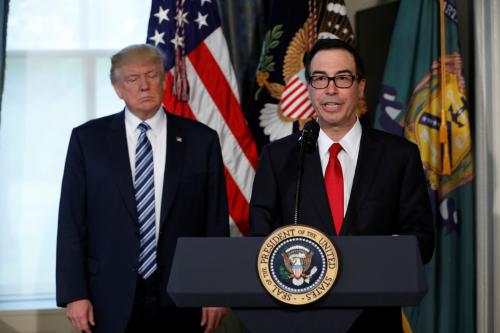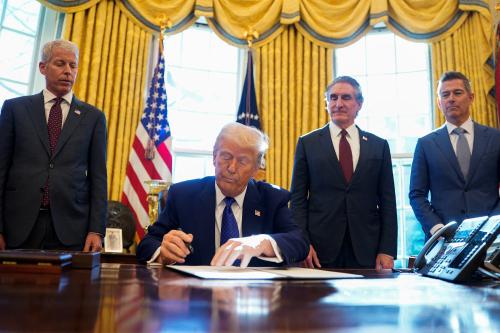Since the global financial crisis, many countries have set up new authorities to address emerging financial stability risks. In a new paper, Federal Reserve Board Associate Director Rochelle Edge and Miriam K. Carliner Senior Fellow Nellie Liang study these authorities to determine their ability to set macroprudential policies to reduce potential systemic risks that could arise, for example, from rapidly rising house prices or persistently low interest rates.
Using a new dataset for 58 countries, Liang and Edge find that although formal multi-agency financial stability committees (FSCs) have been created in 41 countries, just two have direct powers to set policies and only 11 can issue “comply or explain” directives, in which an agency is expected to respond by taking the directed action or explain why it did not. Regression results suggest the arrangements are designed more to share information than to take actions. As a result, most new financial stability authorities are not well positioned to direct countercyclical macroprudential policies, and provide meaningful alternatives to monetary policy to reduce time-varying financial stability risks.
Among the additional results of their study, the authors found that:
- The ministry of finance is the chair or co-chair of the FSC in 25 countries—more often than the central bank. The central bank is the sole authority in most countries without a FSC, generally in smaller countries and when it is also a prudential regulator.
- Bank regulators are part of the governance structures in nearly all the countries studied, but a co-chair of only one FSC, indicating that while microprudential regulators are critical in the institutional set-ups for financial stability, they are not in charge of macroprudential policies.
- Regression analyses suggest FSCs are not set up to take special advantage of central banks’ macroeconomic stabilization skills. In addition, the ministry of finance as chair is more likely in countries with a greater need to coordinate across multiple agencies and that have experienced more financial crises that drew on fiscal resources.
- Member agencies remain the primary authorities to set countercyclical tools. Without their own tools, FSCs would need to convince its member agencies to coordinate policies to counter rising systemic risks. This arrangement raises the risk that while FSCs will lead to better monitoring and communication, they will not lead to better financial stability outcomes.
Recommendations
In order to enhance the ability of FSCs to meaningfully contribute to financial stability policies, the authors recommend that countries:
- Clarify that FSC members individually, not just collectively as a committee, have responsibilities for financial stability, as a common mandate would make coordination more effective;
- Ask the member agencies that have the authority to use certain macroprudential tools, such as countercyclical capital buffers, stress tests, and loan-to-value ratios, to articulate in advance the conditions that would prompt them to use these tools, in order to facilitate coordination;
- Create automatic mechanisms for FSCs to request macroprudential tools from the government when needed, rather than to just issue a warning about potential risks.
The Brookings Institution is committed to quality, independence, and impact.
We are supported by a diverse array of funders. In line with our values and policies, each Brookings publication represents the sole views of its author(s).








